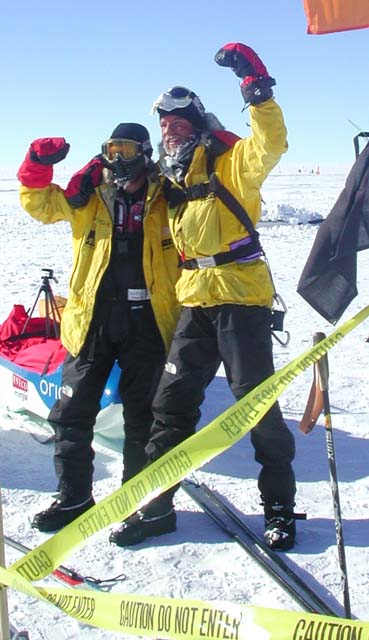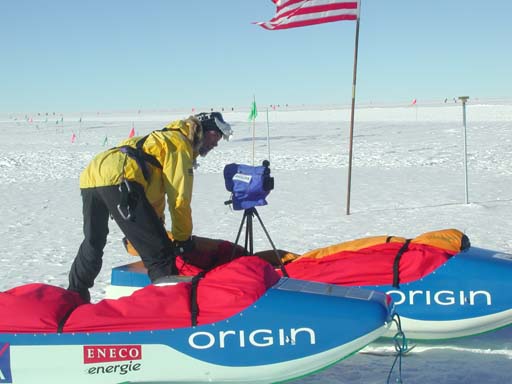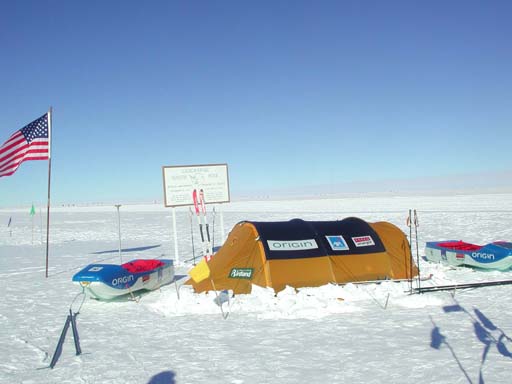
Thursday and Friday, December 28-29, 2000
Thursday morning, just as I was preparing to take a van to MAPO, our PA system announced that two Dutch explorers were approaching the pole. I hurried out and saw out in the distance, two brightly colored men on skis who were each pulling a sled. They approached with a steady and eager pace. As they reached the ceremonial pole, they hugged each other enthusiastically. I made a QuickTime movie of their arrival. I hope to post this on the web site when I come back to Berkeley.

As you can see in the pictures, they looked very well after travelling the long distance. After their hugs, they moved to the real pole. We cheered and took pictures. They quickly took out their GPS devices and confirmed that they really made it. After a few handshakes and a brief conversation, they headed to the warmth of the Dome.

If you look carefully on the picture of these two sleds, you can see a video camera that tracked their progress. These sleds contain everything they need for several months except for some equipment that gets resupplied to them by air. Later, they pitched their camp right next to the pole. You can see a picture of their tent and their supplies. After this eventful start of the day, I then walked to MAPO to resume my electrical noise measurements of the DOM.

It is amazing how the DOMs were put in the ice in a hole 2 km deep. First, a hot water drill is used to make the hole. Hot water is used to melt the ice. Because ice is a very good insulator, the hole remains water for several days. Once the hole is ready, we rush out and take the string of modules and lower them into the hole. It takes about 12 hours to complete this procedure. As this procedure must be done outside, people get very cold. After we lower the string, we must wait several days before the ice freezes. If everything goes well, then we have our detector in ice.
Two of my colleagues are trying to put another detector at the surface of the ice. They are using a much larger hole. Their biggest problem is that it is taking too long for the water to freeze. It is hard to freeze a large body of water here.
Today, the Dutch adventures were eating at our cafeteria and walking around our camp. One of them was wearing a fresh bandage on a frostbitten ear. On the way to the pole, they used their skis to drag the sleds. They said skiing in Antarctica is like skiing on sand. The snow has a lot of friction. Their return to the Antarctic coast will be the same way. This way will be with the wind so that they will use their sails. I overheard one of the explorers saying that despite eating a tremendous amount of food, they were losing weight.
The temperature is getting a little colder; it is down to -24 F. The wind is very light. It was sunny in the morning and cloudy in the evening. Again, it is very comfortable to stay outside. Still no halos or sun dogs.
Howard Matis